Abstract
Bacterial respiratory quinones were used as biomarkers for studying the bacterial population structure, especially the content of Acinetobacter species, in a laboratory-scale anaerobic-aerobic activated sludge system and in the standard aerobic system. All tested sludges contained both ubiquinone and menaquinone, with a molar ratio of about 1:0.5. High-performance liquid chromatography showed that ubiquinone with eight isoprene units (Q-8) was present as the predominant ubiquinone, Q-10 was the second most common type, and Q-9 and other homologs were minor components in the anaerobic-aerobic sludge and the standard aerobic sludge. Bacteriological examination indicated that, in both sludge systems, Q-8-containing bacteria constituted a large proportion of the aerobic heterotrophic bacterial flora, but only a few strains with Q-9 were found. These findings demonstrate that the population of Acinetobacter species, which contain Q-9 as the major quinone, is negligible in those environments. The present results suggest that the introduction of anaerobic conditions into the aerobic batch process has little influence on the bacterial community structure.
Full text
PDF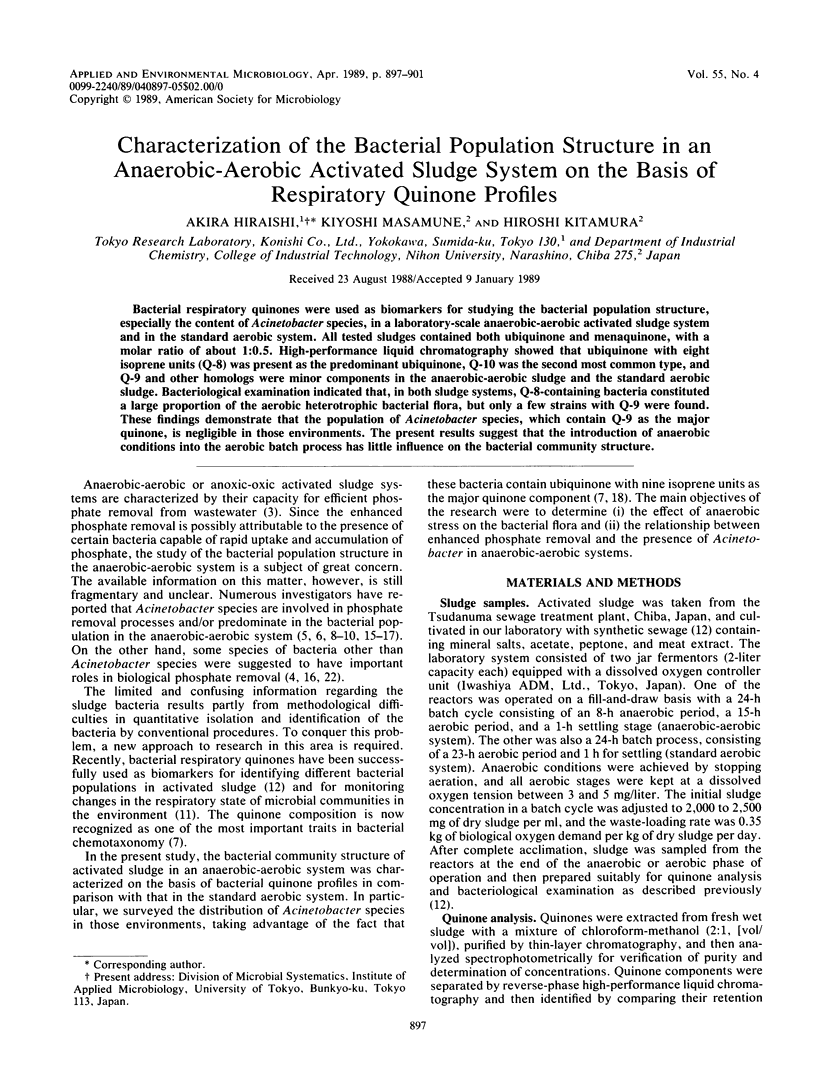
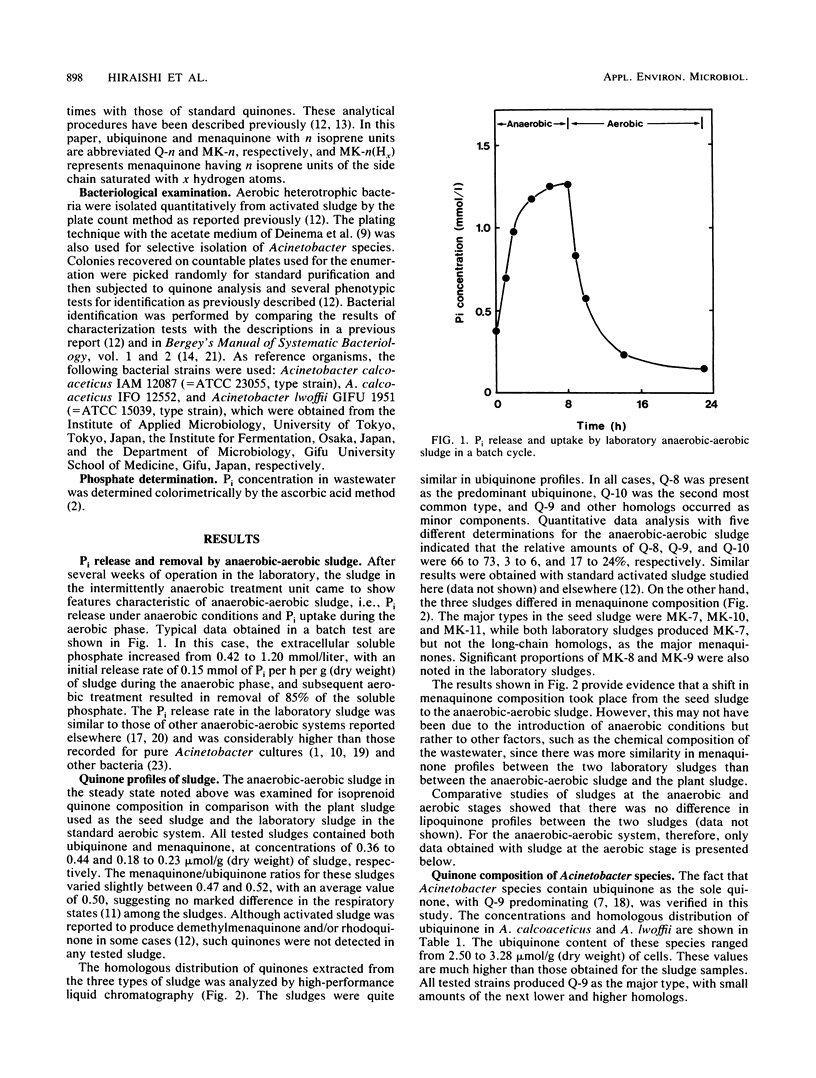
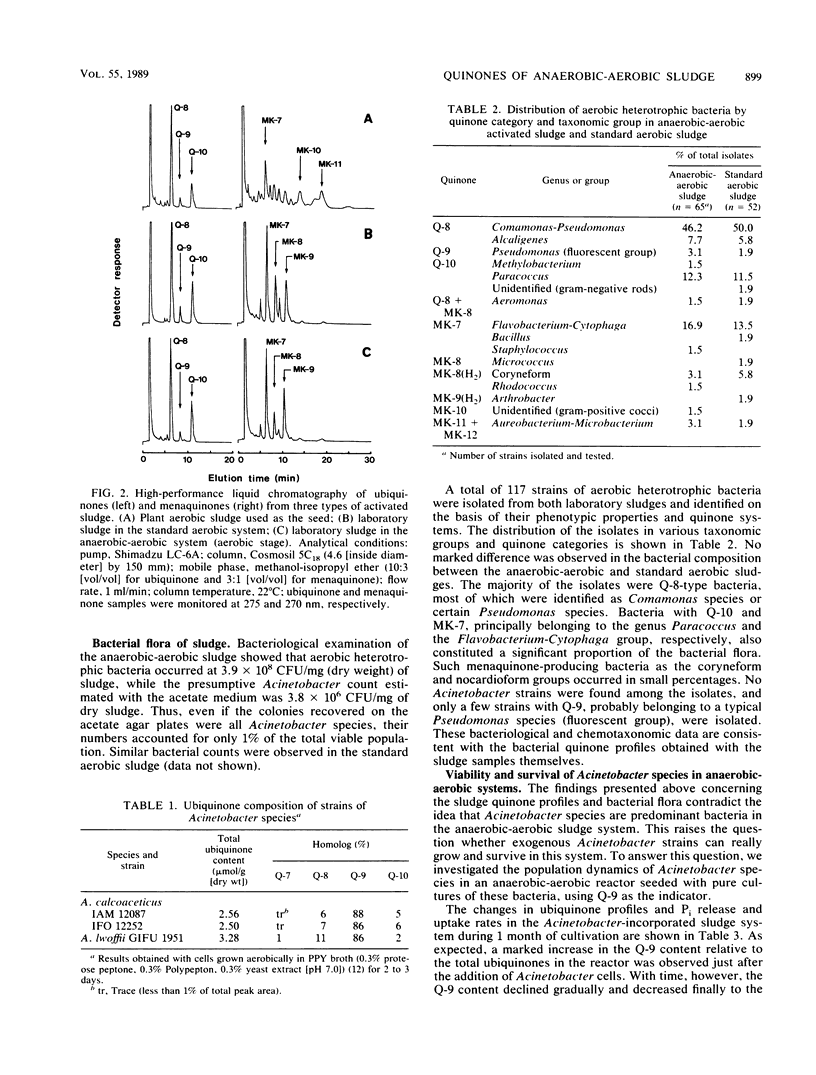
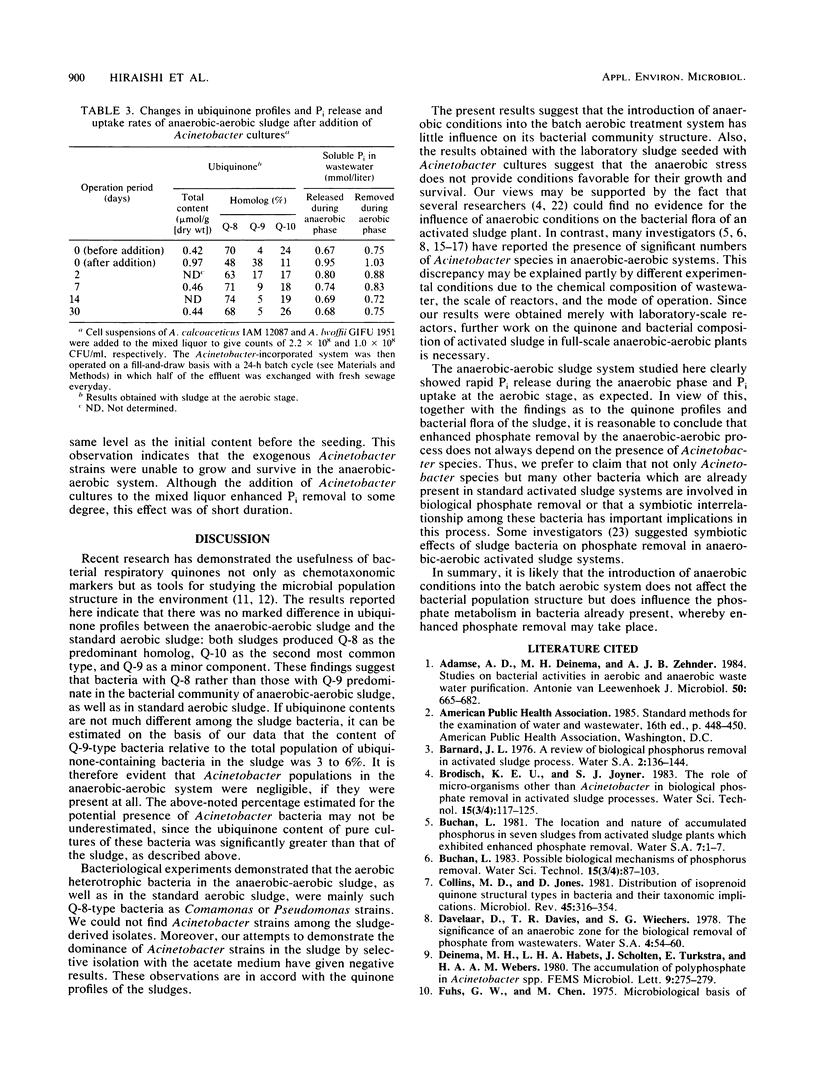
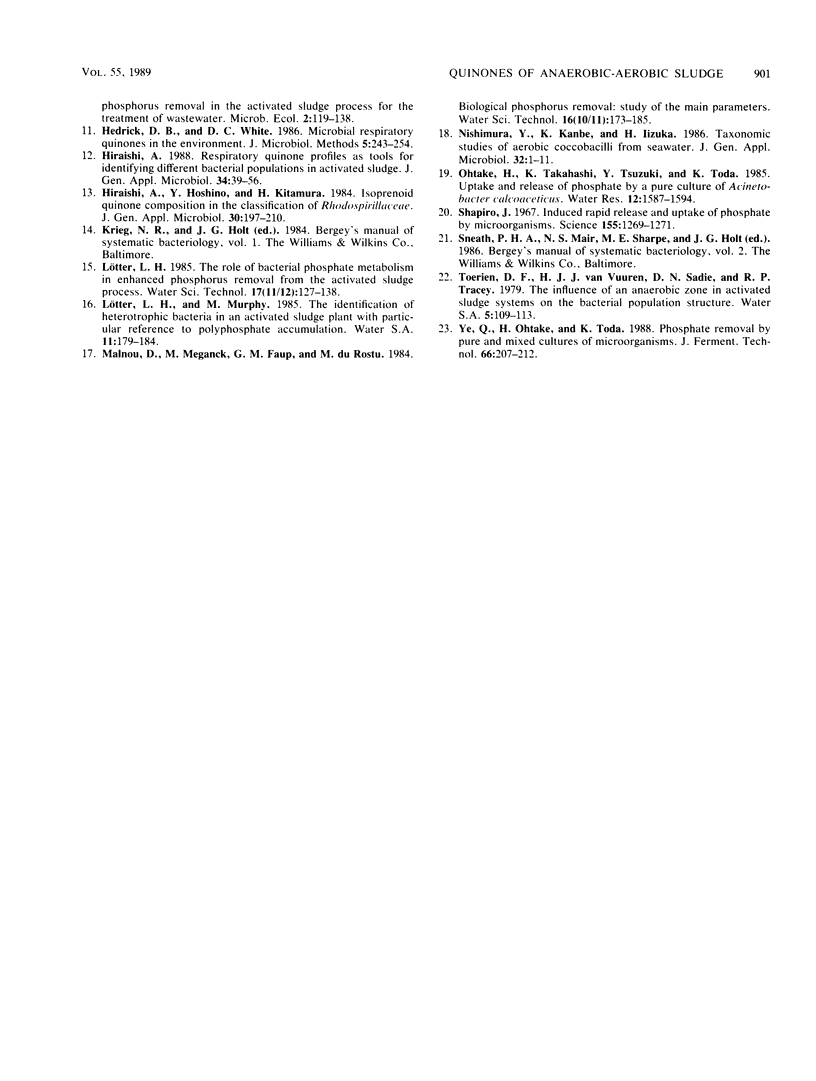
Selected References
These references are in PubMed. This may not be the complete list of references from this article.
- Adamse A. D., Deinema M. H., Zehnder A. J. Studies on bacterial activities in aerobic and anaerobic waste water purification. Antonie Van Leeuwenhoek. 1984;50(5-6):665–682. doi: 10.1007/BF02386232. [DOI] [PubMed] [Google Scholar]
- Collins M. D., Jones D. Distribution of isoprenoid quinone structural types in bacteria and their taxonomic implication. Microbiol Rev. 1981 Jun;45(2):316–354. doi: 10.1128/mr.45.2.316-354.1981. [DOI] [PMC free article] [PubMed] [Google Scholar]
- Shapiro J. Induced rapid release and uptake of phosphate by microorganisms. Science. 1967 Mar 10;155(3767):1269–1271. doi: 10.1126/science.155.3767.1269. [DOI] [PubMed] [Google Scholar]


